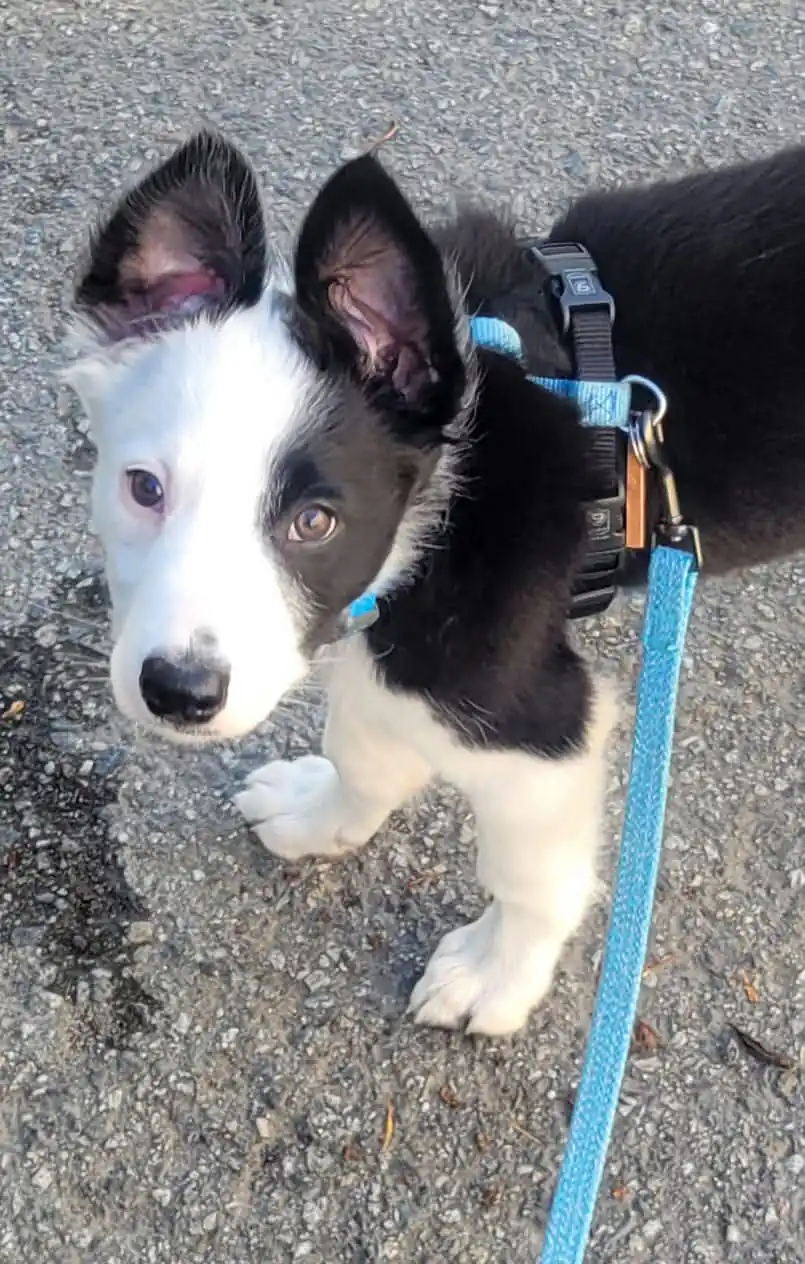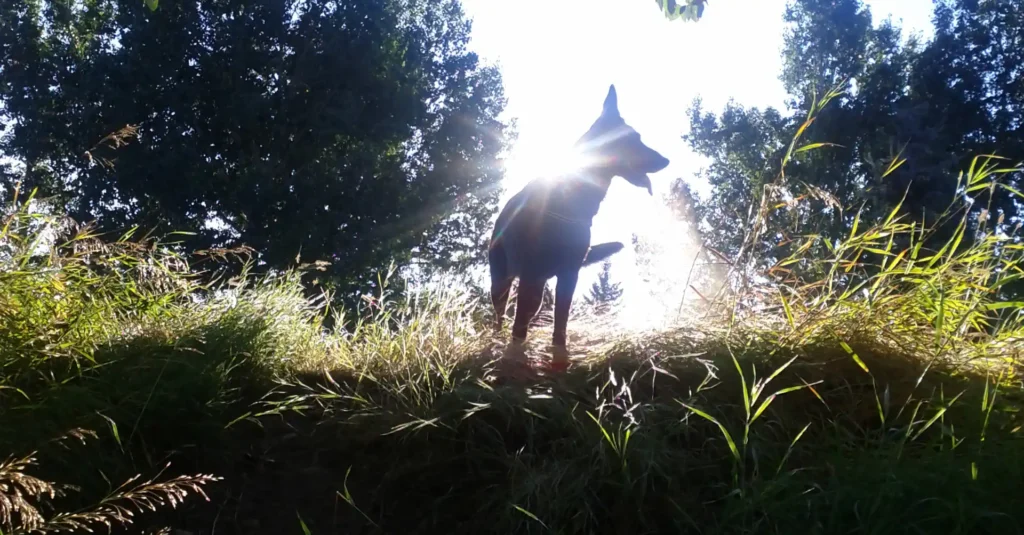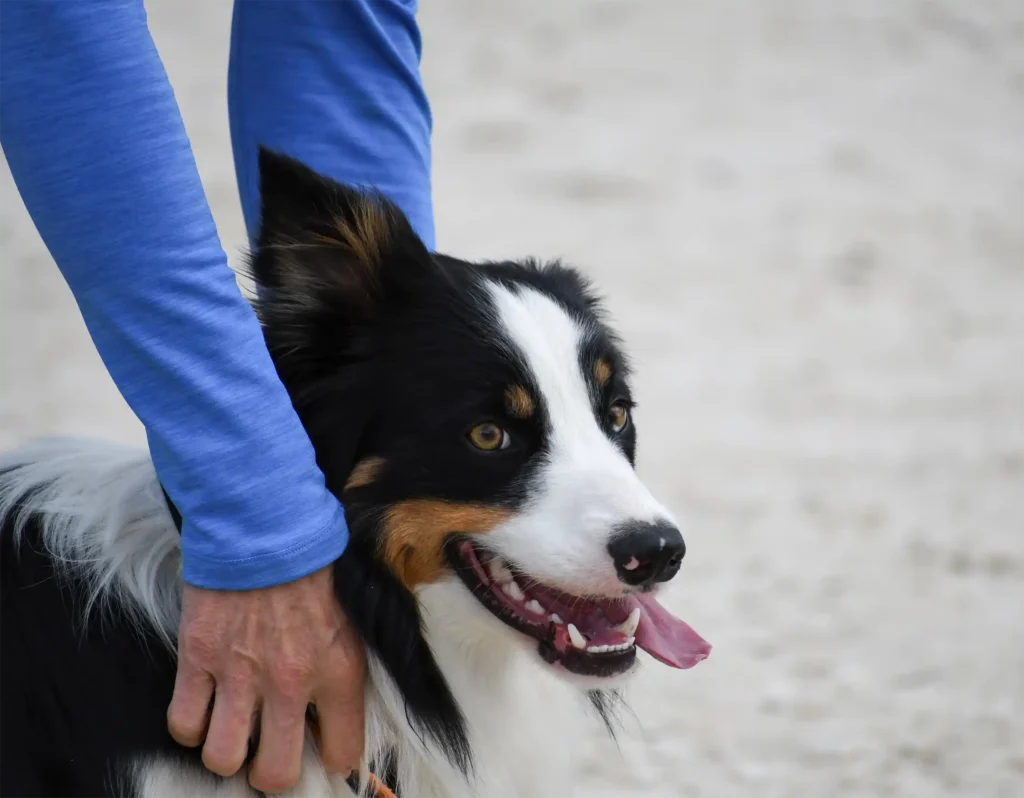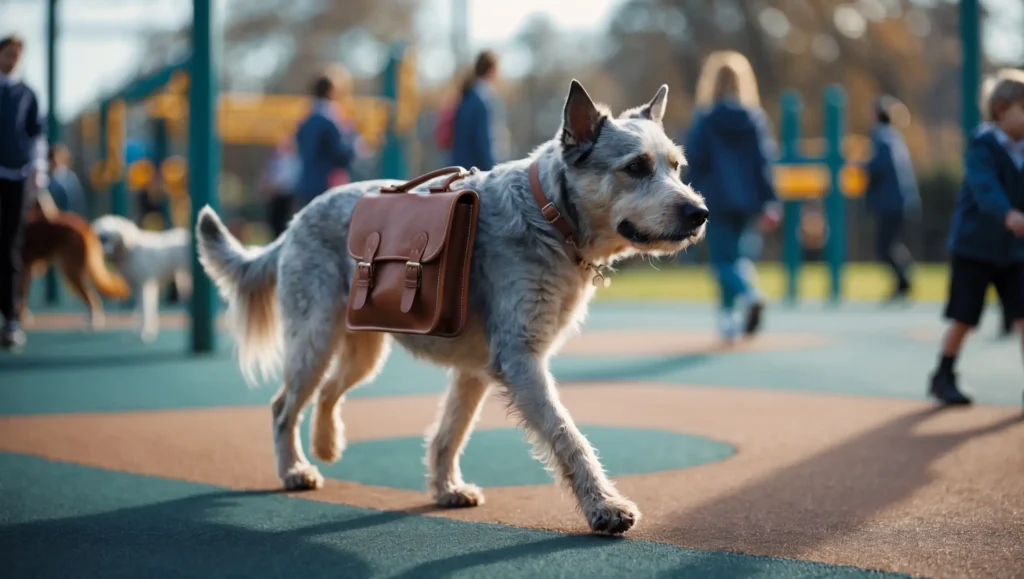The most common puppy question I am asked, besides when to start puppy training, is what are the first exercises to teach a new puppy? For me, the traditional “sit-down-stay-come” obedience exercises commonly taught in obedience classes are not the most important. My first exercises are all about creating clarity in communication for now and down the road; attention to me; a relationship with me; and body awareness through simple targeting.
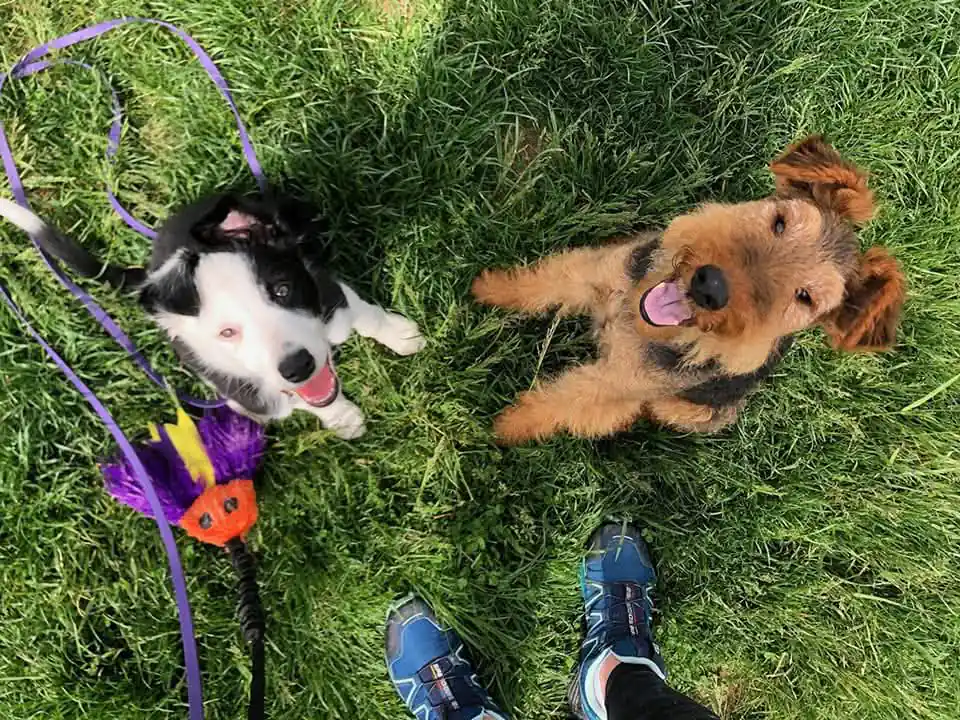
Let’s get into my top five list:
- Create a Marker: Your Bridge to Communication
Your marker could be a clicker or a verbal cue (like the word YES or the word CHECK). Spend a few minutes a few times a day pairing the sound with a treat, playing the role of Pavlov, to create a positive association with the sound. Your marker tells your puppy reinforcement is coming, and your marker is your way of pointing out or marking something your puppy did that you like. It functions like a bridge, bridging the behaviour your puppy did when she heard the marker to that treat which might take a few seconds for you to get into her mouth. A great example of the marker’s use: you are walking your puppy down the sidewalk and she looks up at you. That is a desired behaviour! You want to mark it, pointing out to her that attention gets reinforced. The more reinforcement-minded you are and the more you use your marker, the more your puppy will pay attention to her behaviours.
- Teach Your Puppy Their Name: The Most Important Word
Your puppy’s name is the MOST important word they will ever learn! It is the word that asks for attention and the word that one day will be an essential part of a really good recall. Like your marker, start by simply saying their name and pairing it with food. They need to know that their name is the best word you say! Once their name is getting a response, try saying their name when they are slightly distracted. Wait for a response and then use your marker to point out their attention and reward. As your training progresses, you will want to challenge their response by working around more distractions. Avoid repeating their name or saying it without reinforcement in their early months. Use their name only in training and with reinforcement as you want to condition a powerful response.
- Playtime! Building a Relationship Through Tug
Honestly, if I can make one recommendation to all puppy owners it is to get down the flood with a fun tug toy and play, play, play with your puppy! Refer to my post on playing tug to get some suggestions on good tug toys and how to play. The McCann Dogs Youtube channel also has great guidance on playing tug with a puppy. By playing tug we broaden our reinforcement, going beyond just using food. Tug creates more of a relationship and engagement with our dog and this will come in handy down the road during recall training. Make sure your tug toys are NOT left out! They need to have special status.
- Station Training: Focus and Body Awareness
Teach your puppy to go to a station. I love platform training with my puppy. Train your puppy to go to a little bed or a cot – something elevated that she can easily get all four paws on. I love my Cato board for a lot of things, due to it’s durability and portability. I bring it everywhere – to the park, to class, to the backyard, to friends’ homes. Station training promotes body awareness and the focus to put all four paws on something. As my puppy understands the exercise, I use this training to teach a little stay in it’s early steps. You can begin by shaping or luring your puppy onto their station and then mark and reward. Repeat a few times in the session, then take a break and work again on the exercise a few hours later. Don’t leave your puppy’s station out – it should only appear for training and then go away until the next session. By doing this you’ll create a better association in your puppy as to the purpose of the platform you are using.
- Nose Touch: A Versatile Targeting Behavior
Another targeting behaviour to teach early is a nose touch. This exercise is such a basic behaviour but has so many benefits behind it! The nose touch can be used in the early days of teaching your puppy to come to you. It can be used to direct them away from something and bring their connection back to you. It can be used to teach tricks. It can be used to replace luring. Youtube has many good videos of how to teach but basically I start by presenting an open hand to my puppy. When they come to sniff or investigate I mark when they makes contact and then place a treat into that hand. Repeat.
These early exercises are fun and easy to start in your home. They teach your puppy HOW to learn which will set them up for life. They will provide mental stimulation (creating a tired puppy – we all love that!) and a working relationship. Oh and to answer the question about when to start puppy training: the answer is immediately!
Ready to start Vancouver puppy training?
Check Zen Dog Canine Training’s Puppy classes today to learn more about our puppy training programs!
